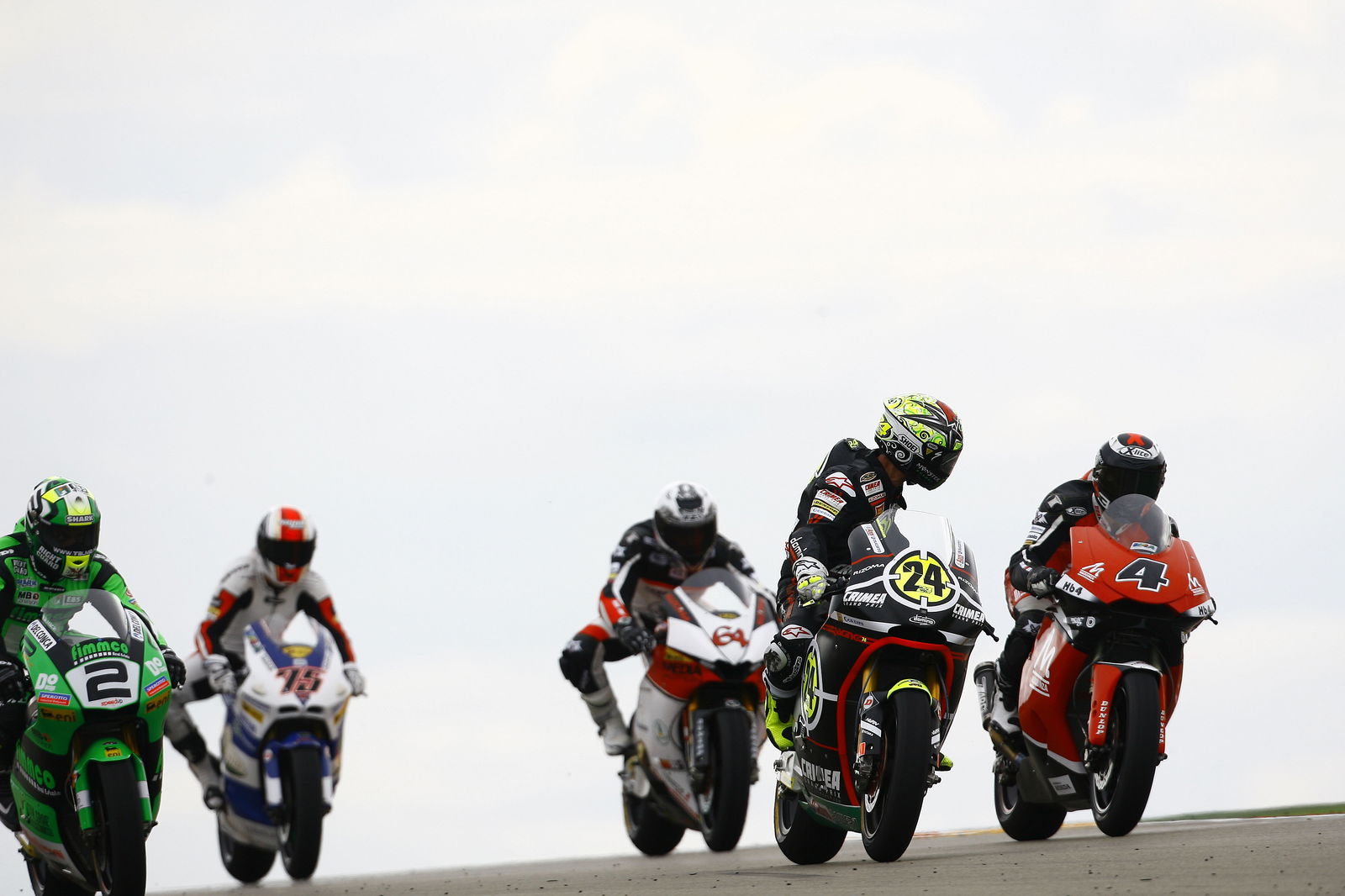125: Marquez explains wet weather riding

Few will be surprised if rain makes an appearance at some stage during the forthcoming flyaway races in Japan, Malaysia and Australia.
Whilst MotoGP and Moto2 have had a completely dry race season so far, the 125cc class has already had two races declared as 'wet', at Sachsenring and Brno (although both were on drying tracks).
Title contender Marc Marquez won the first of those events, and finished seventh with a recently dislocated shoulder in the other. Here he explains some secrets to wet weather riding, starting with the engine.
"An oilier carburetion than usual is added to achieve a less abrupt and aggressive throttle response than normal, due to the fact that it is easier for the rear wheel to slide in the wet," said Marquez. "Also, to achieve the optimum temperature for running the engine - which is 60 ?C - a close eye is kept on the radiator."
In low temperatures, a basic but very effective method is used to influence engine temperature. "The mechanics use duct tape to cover the radiator air inlet and avoid the engine getting too cold," he said.
A further trick is to allow the rider to regulate the temperature himself without having to do a pit stop, "one of the tapes is fixed with a pulley, fixed onto the front-wheel shock absorber, which I can pull while running".
In terms of suspension, a softening of the reactions of his Derbi RSA are sought, configuring "the softest adjustments which allow the bike to be most flexible. The tyres are a softer-option too which allows better grip at a lower running temperature [60?C instead of the 80 ?C or 100 ?C which they reach in the dry], without wearing so much as when the asphalt is much hotter."
The tyres used are also grooved to allow the water to clear and help generate heat in the rubber.
Changes are also made with respect to clothing and protection gear.
"The helmet visor, for example, instead of being dark to prevent the sun dazzling the rider, is completely transparent to improve visibility in rainy conditions," said the Spaniard.
Also, the inside has a demister, a second layer of plastic to stop the humidity steaming up and obscuring the rider's vision. The visor also has a rubber outer layer which stops water from getting inside the helmet.
The knee sliders "are changed for thicker ones, because, when it rains, the bike is leaned less and therefore it is possible to get a reference earlier than with the conventional knee slider".
Over the race suit, a rain suit is worn, a transparent plastic cover which has to be very tight fitting over the leather to avoid it inflating with the effects of the air and speed. It is composed of two parts, one for the upper body and some trousers.
"Usually it is only worn in extreme cases when there is a lot of rain and its function is to stop the water getting into the race suit and the leather absorbing it, becoming heavier and making riding more uncomfortable."
When it rains, riding style also changes and "has to be much more precise. You have to concentrate much more because the slightest mistake could cost you a fall."
Braking starts earlier than usual and, on exiting the turns, the throttle has to be opened up very gently.
At each circuit it is important to pay attention to the type of asphalt as the level of grip varies on each track. "At the beginning you have to go very slowly, at least for the first few laps to check the level of grip on the track
"I don't like the rain much but I usually do well in it," concluded Marquez.


